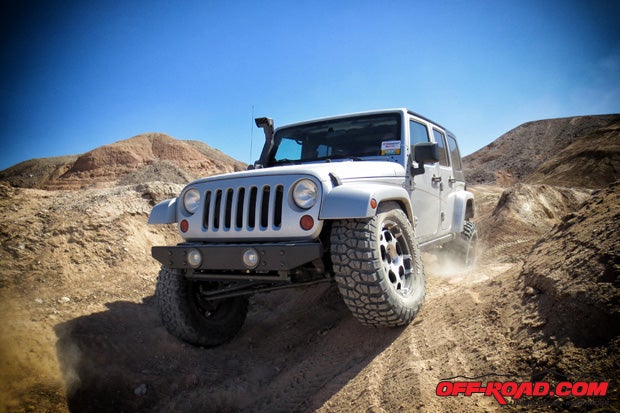
If you own a Jeep Wrangler JK or any other Jeep, one of the best things you can do to help increase suspension articulation (a.k.a. Flex) is to disconnect your front sway bar. This alone will yield more off-road performance than any other gingerbread on the market--even on a stock 4x4. The best part is that this can be done for FREE. All you need is a set of wrenches to remove the sway bar links—two bolts to freedom.
The sway bar (a.k.a. Anti-Sway Bar) helps reduce the body roll on your 4x4 when going around corners or making sudden steering adjustments at highway speed. Off-road, having the sway bar connected can actually limit your Jeep. Free up the front axle and now it works much more independent from the frame. The ride also becomes more fluid and the Jeep has better articulation on the trail. The effect is especially noticeable on rocky or off-camber terrain.
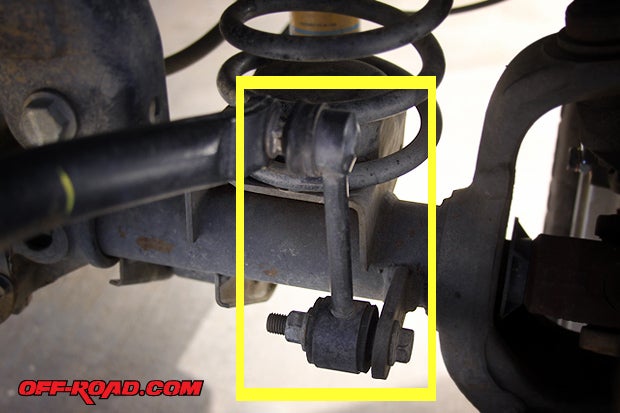
If you haven’t tried disconnecting your sway bar, give it a shot next time you hit the dirt. Simply remove the sway bar links from the bottom end, where they attach to the axle. Secure the sway bar and sway bar links to the frame with a few zip ties or bungee cords to keep them from dragging or catching. Once you experience axle freedom, you’ll want to “disconnect” every time you hit dirt.
WARNING: Please make sure the sway bar is re-attached before getting back on pavement. Don’t laugh, people do forget. The last thing we want are Jeeps rolling or crashing on their way back to civilization.
SWAY BAR QUICK DISCONNECTS
Although removing the factory sway bar links can be done for free, a set of quick disconnects makes life on the trail much better—especially if you find yourself hitting the dirt often. Most Jeepers will agree that it’s one of the best upgrades you can do on your Jeep.
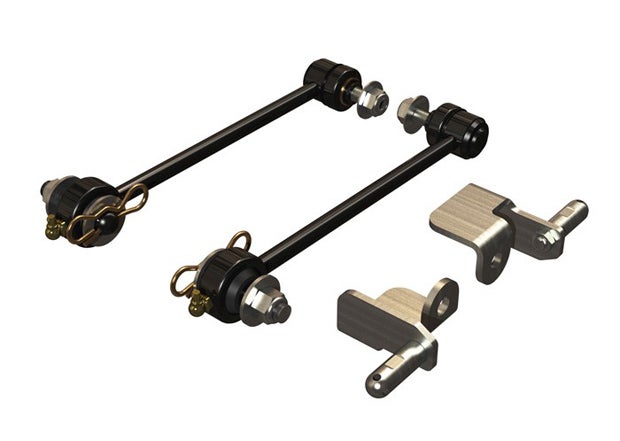
Since our friend Brian’s Jeep has been spending more time off-road lately, the need for a quick sway bar disconnect solution became high priority. We looked at different options but really liked the design and function of the TeraFlex system. Most manufacturers build units that accomplish the disconnecting, but once the sway bar is dangling off the axle it’s up to the owner to figure out the best way to get it out of the way and secured. TeraFlex goes the extra mile to engineer function into their product.
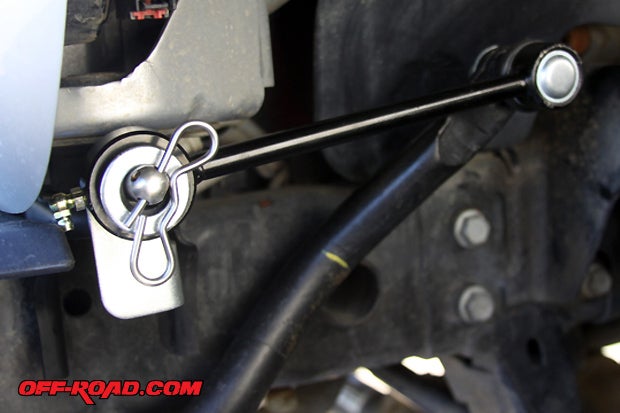
The TeraFlex sway bar links can be easily disconnected and safely stowed out of the way when not in use, thanks to its unique set of “Park” brackets. In addition, the TeraFlex sway bar quick disconnects feature spherical polyurethane bushings, which help eliminate noise and avoid metal-to-metal wear and tear. The design combines silent function with ease of use. They are also fully serviceable with replacements parts available directly from TeraFlex.
TeraFlex makes different length sway bar links to accommodate Jeep Wranglers with stock suspension or aftermarket lifts (0-3 inch and 4-6 inch links). They are designed to fit all 2007 to 2013 JK Wrangler, Rubicon and Unlimited two- and four-door Jeeps. We ordered a set of the 0-3 inch TeraFlex Sway Bar Quick Disconnects (Part# 1753010) for Brian’s Jeep since he has a 2.5-inch suspension lift already installed.
INSTALL
The installation of TeraFlex Sway Bar Quick Disconnects can be done in your very own garage or driveway. All you need is a set of metric and standard SAE tools. A torque wrench is also recommended to torque down bolts on the system. Below is an overview of our installation Brian’s Jeep JK.
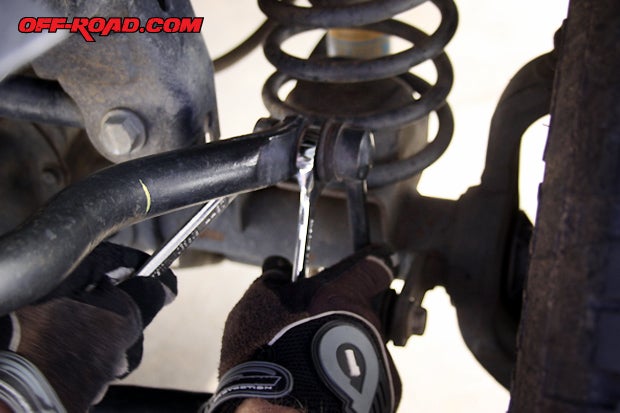
The first step is to remove the factory sway bar link using a 18mm socket or wrench. If the bolts look a little rusty or dirty, clean them off and add some WD-40 or Liquid Wrench to help loosen them up. This will make the removal process much easier.
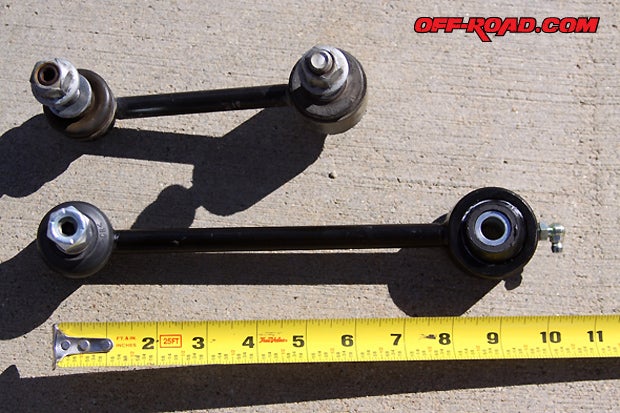
Once removed, a side-by-side comparison shows the added length of the TeraFlex sway bar link (bottom) over the factory link (top). Another noticeable difference is the large spherical polyurethane bushing on the opposite end.
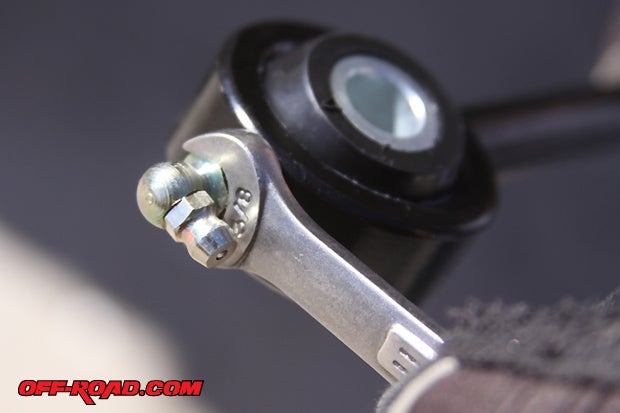
A nice feature on the TeraFlex sway bar links is greasable bushings. Zerk fittings are included and make the greasing simple. We just had to screw and tighten them up into place.
The spherical polyurethane bushings come with pressed metal sleeves from the factory. They are designed for use in the TeraFlex JK Leveling kits and for JKs with the electronic sway bar option, like the Wrangler Rubicon. In our case, we had to press out the sleeve in order to use the quick disconnect function. We used a small vise and socket to press out the metal sleeve, but have seen them come by hand. Ours was pretty snug.
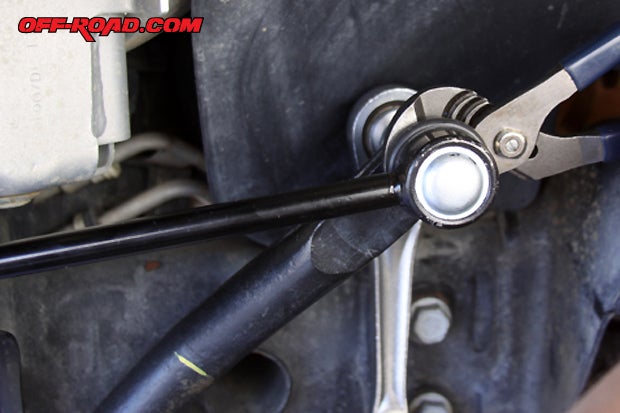
When installing the TeraFlex sway bar links, it may be necessary to use pliers to hold the spherical bearing bolt from spinning. If possible, use non-marring pliers or a rag between the pliers and the bolt to keep from damaging the bushing boot. TeraFlex recommends tightening this top end link bolt to 75 ft-lbs.

At the axle, new pin mount studs are used. These are bolted up to the factory link mount on the axle, facing inboard. Red Loctite is recommended, along with torquing the bolts to 75 ft.-lbs. The TeraFlex pin mount studs have a machined flat surface that allows a wrench to hold the pin in place while tightening. TeraFlex engineers really take extra care in making things functional.
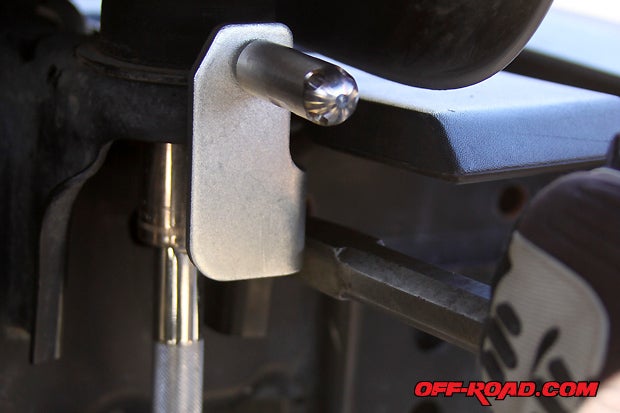
The angle bracket that serves as the “Park” spot mounts directly to the body, using an exiting body mount bolt. The bracket has a matching diameter bolt pin to the one on the axle, giving the sway bar link a snug spot to rest when not in use. Using a new nyloc nut, the bracket is fastened down to 80 ft.-lbs. on the frame mount. We found that using a pry bar and wedging it between the bracket and frame helps keep the bracket from spinning forward while tightening.
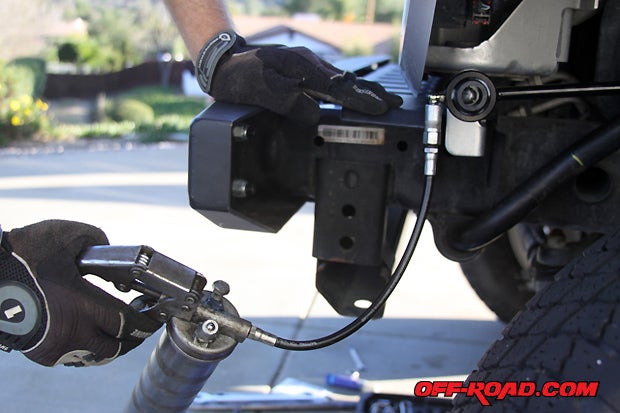
Before putting any miles on your Jeep, TeraFlex recommends greasing up the spherical bushings on the sway bar quick disconnects. Simply attach a grease gun to the zerk fitting and squeeze. Any good chassis grease will do, but we really like the Lucas Red ‘N’ Tacky because of its fortified properties against water and dirt.
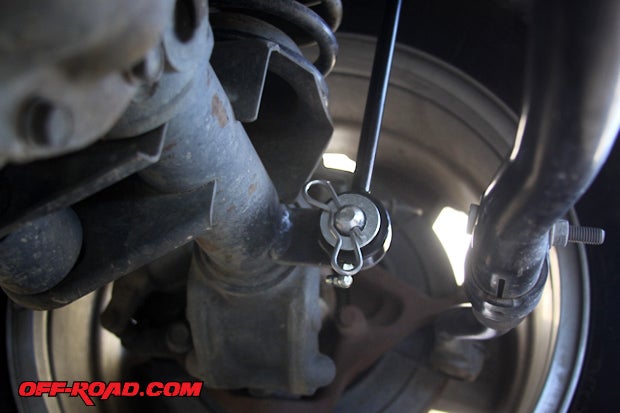
The final step is attaching the bottom end of the sway bar link to the axle. Simply slide the sway bar link into the new TeraFlex bolt pin and secure by using the included washer and safety pin. Having the wheels on a flat surface will make the job much easier. We also found that using a rubber mallet comes in handy if the sway bar link is really snug going in to the pin.
The TeraFlex Sway Bar Quick Disconnect installation took less than one hour to complete.
THE DIRT
Brian really likes the way the Jeep drives and feels off-road with the sway bar disconnected. The front axle moves much more freely and the ride has improved. Visually from the outside, we can definitely see that the JK has more flex when going through obstacles.
Using the TeraFlex quick disconnects is also simple, Brian can quickly disconnect and connect the sway bar by himself with minimal effort. He does carry a small rubber mallet to help remove the lower sway bar link end, as the polyurethane bushings can be snug on the axle pin mounts sometimes. The sway bar links are “parked” on the TeraFlex frame bracket using the same washer and safety pin used on the axle. So far we have had not issues with them coming off or getting in the way.
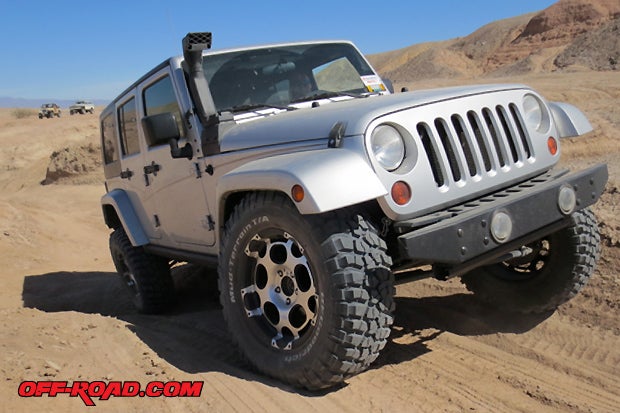
We tested the TeraFlex sway bar quick disconnects using factory Mopar 18-inch wheels with 255/70R18 tires and also aftermarket wheels with 35-inch tires. They worked great connected and disconnected. No rubbing, at all. Even running the larger 35x12.5R18 BFG Mud Terrain KM2 tires proved to work well. Brian stuffed the BFGs into the fenders on a few obstacles in the Truckhaven Hills, but we never lost the sway bar or links. This is huge, as we’ve seen other brands of quick disconnects fail during full tire stuff. It usually involves damage to the sway bar link, making reconnecting the sway bar almost impossible.
On the road, the TeraFlex sway bar links are nice and quiet. They don’t slap around nor give off rattling metal sounds like worn heim ends do. The sway bar feels true and controls body roll like it should. The TeraFlex system works very well with the Jeep suspension and has earned high marks in our book.
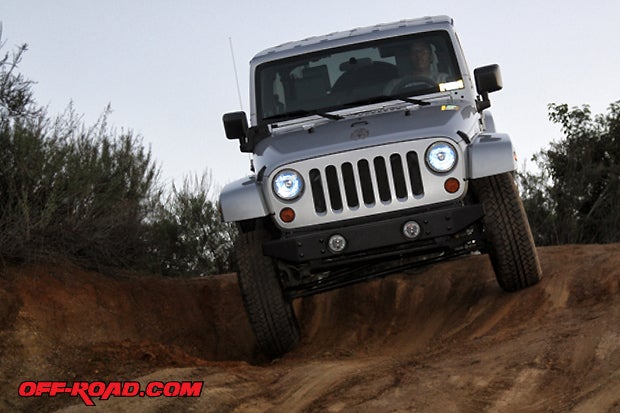
Overall, we are really happy with the results. TeraFlex manufactures many nice Jeep parts, their sway bar quick disconnects are one of them. They are well designed and engineered to work on and off the trail. We highly recommend the TeraFlex Sway Bar Quick Disconnect system to anyone looking to improve their ride and suspension performance off-road. It’s a simple upgrade that will yield great results for your Jeep, yet won’t break the piggy bank doing it.
SOURCE
TeraFlex
http://www.teraflex.biz/
801/288-2585


 Your Privacy Choices
Your Privacy Choices